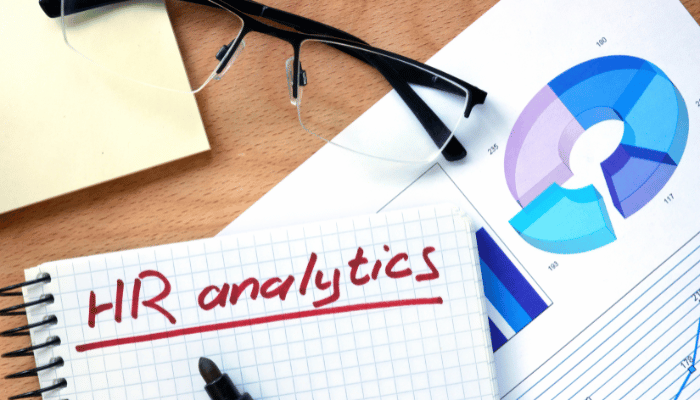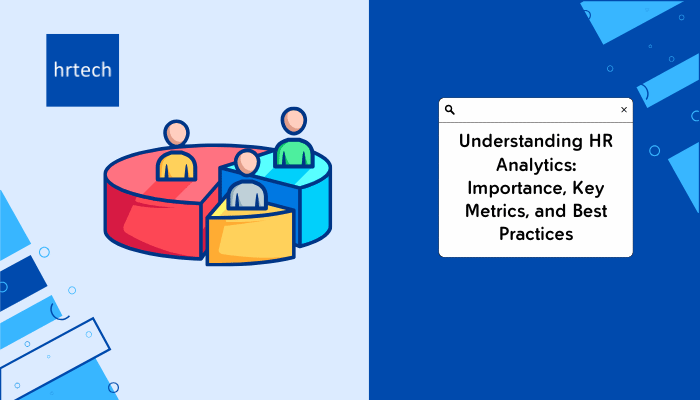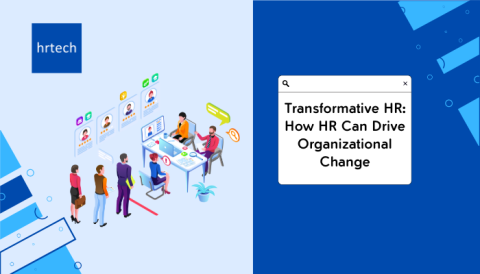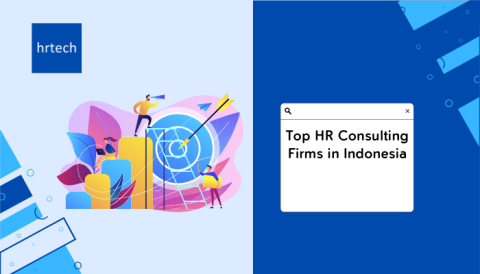Imagine having a crystal ball that reveals the future of your workforce. What skills will be in demand in five years? Who are your most at-risk employees for churn? HR analytics is your key to unlocking these valuable insights and making data-driven decisions that empower your organization.
As John Bersin, industry analyst believes “HR analytics is not just about measuring the past; it’s about shaping the future of your organization,” it’s hence being proven!
According to a recent Harvard Business Review report, an overwhelming majority of professionals, 99%, agreed or strongly agreed that their HR function is highly skilled in utilizing data to shape future workforce plans. Surprisingly, only a mere 1% disagreed with this notion.
These eye-opening numbers paint a crystal-clear picture: HR analytics is no longer a nice-to-have, but an essential strategic tool. Unlock the potential of data-driven insights and propel your HR function to unparalleled success.
Introduction to HR Analytics:

HR analytics, also known as people analytics or workforce analytics, is the data-driven approach to understanding and managing your organization’s human capital. It involves gathering, analyzing, and interpreting employee data to gain insights into various aspects of your workforce, such as:
Recruitment and onboarding
Performance management
Employee engagement
Learning and development
Compensation and benefits
Retention and turnover
HR analytics has evolved significantly in recent years, driven by advancements in technology and the increasing availability of data. Traditionally, HR relied heavily on intuition and personal experience for decision-making. However, HR analytics empowers HR professionals to move beyond guesswork and base their decisions on concrete evidence and data-driven insights.
While these terms are often used interchangeably, there are subtle distinctions between them:
HR Analytics: Focuses primarily on quantifiable data related to traditional HR functions like recruitment, compensation, and training.
People Analytic: Takes a broader perspective, encompassing qualitative and quantitative data to understand not only what employees do but also how they think and feel.
Workforce Analytics: Emphasizes the strategic application of data to drive business performance and achieve organizational goals.
In today’s dynamic business environment, organizations need to be agile and adaptable to thrive. HR analytics plays a crucial role in enabling this by:
Providing insights to identify high-potential talent, improve employee engagement, and optimize HR processes.
Supporting strategic decision-making by aligning HR initiatives with broader business goals.
Enhancing workforce planning by anticipating future skill needs and talent gaps.
Improving HR’s credibility and impact by demonstrating the measurable value of HR programs and initiatives.
Transforming HR through Agile Workforce Solutions
Types of HR Analytics:
HR analytics can feel like a complex landscape, but fret not! It acts as a toolbox, where each tool serves a specific purpose in understanding your workforce.
1. Descriptive Analytics (The Data Detective)
Think of descriptive analytics as your detective. It gathers and analyzes historical data to paint a clear picture of your workforce’s current state. This includes metrics like:
Employee turnover rate: Uncover the percentage of employees leaving the organization within a specific timeframe.
Time to fill open positions: Gauge the efficiency of your recruitment process by measuring the average time it takes to fill vacant positions.
Cost per hire: Calculate the total expenses incurred in hiring a new employee.
Training completion rates: Track the percentage of employees who successfully complete training programs.
Descriptive analytics empowers you to answer essential questions like: “What has happened?” and “What are the current trends?”
2. Diagnostic Analytics (The Why Investigator):
Building upon the detective’s findings, the why investigator delves deeper, uncovering the underlying reasons behind data patterns. For example, you might utilize diagnostic analytics to understand:
Why is employee turnover high in a specific department? Are there factors like workload, lack of recognition, or limited career growth opportunities contributing to this trend?
What factors contribute to low training completion rates? Is the training content engaging and relevant? Are there logistical challenges like time constraints or accessibility issues?
Diagnostic analytics helps you answer the crucial question: “Why is this happening?” by identifying the root causes of trends and patterns in your data.
3. Predictive Analytics (The Future Teller)
This advanced technique leverages statistical models and machine learning algorithms to forecast future trends and potential outcomes. It can be instrumental in:
Identifying employees at risk of leaving the organization: By analyzing factors like performance, engagement, and career aspirations, you can proactively address potential churn.
Forecasting future talent needs based on business growth projections: This allows you to develop targeted recruitment strategies and ensure you have the right skills available to meet future demands.
Predicting the effectiveness of new HR initiatives: Before implementing a new program, you can estimate its potential impact on areas like employee engagement, performance, or costs.
Predictive analytics equips you to answer the question: “What will likely happen?” by providing insights into potential future scenarios.
4. Prescriptive Analytics (the Solution Architect)
This powerful tool utilizes insights from all previous stages to recommend specific actions based on predicted outcomes. It empowers HR professionals to:
Develop targeted interventions to reduce employee turnover: Based on the identified root causes, you can create personalized strategies to address employee concerns and improve retention.
Design personalized learning and development programs: Identify individual skill gaps and recommend relevant training programs to enhance employee capabilities.
Optimize compensation and benefits packages: Analyze data to ensure your compensation and benefits offerings are competitive and aligned with employee needs.
Prescriptive analytics allows you to answer the critical question: “What should we do?” by providing actionable recommendations for optimizing your HR strategy.
Core Applications and Benefits of HR Analytics:

HR analytics transcends mere data collection; it’s a transformative tool for building a thriving workforce. By leveraging its applications, you can unlock a multitude of benefits.
Imagine recruitment that attracts high-potential talent, eliminates bias, and streamlines processes. HR analytics empowers you to achieve just that. It also fosters performance and productivity by setting data-driven goals, identifying top performers, and providing personalized coaching.
Workforce planning becomes proactive with HR analytics. You can anticipate future talent needs, identify skills gaps, and develop targeted training programs to bridge them. Additionally, HR analytics helps you reduce employee turnover by pinpointing at-risk individuals and implementing effective retention strategies.
Furthermore, cost savings and improved workplace safety are within reach. Analyze data to negotiate better benefits packages, identify factors affecting absenteeism and safety incidents, and implement interventions to address them. Finally, demonstrate the ROI of HR initiatives with data, justifying future investments and showcasing their value to the organization’s success.
Predictive HR Analytics: A Focused View
Imagine being able to predict your organization’s future staffing needs, potential talent flight risks, or even the impact of upcoming policy changes on employee morale. This is the realm of predictive HR analytics, a powerful tool that harnesses the power of data to forecast future HR trends and events.
Utilizing Predictive Analytics for Future Forecasting:
Talent Acquisition: Predict skill gaps in your workforce and anticipate future talent needs, allowing you to proactively develop targeted recruitment strategies and reskilling programs.
Employee Turnover: Identify employees at risk of leaving by analyzing factors like work performance, engagement levels, and compensation trends. This enables you to implement targeted interventions to retain top talent.
Organizational Performance: Predict the impact of HR initiatives on key business metrics, such as revenue or productivity, allowing for data-driven decision-making and resource allocation.
Examples and Applications:
A healthcare company uses predictive analytics to identify nurses at high risk of burnout and implements targeted wellness programs to improve retention.
A manufacturing firm analyzes historical data to forecast future demand for specific skillsets and develops customized training programs to upskill their workforce proactively.
A financial services organization utilizes predictive analytics to predict the impact of a new remote work policy on employee productivity and engagement, allowing them to make informed decisions and establish necessary support structures.
Challenges and Benefits of Predictive HR Analytics:
While powerful, predictive HR analytics comes with its own set of challenges:
Data Quality: The accuracy of predictions heavily relies on the quality and completeness of available data.
Ethical Considerations: Ensuring responsible use of employee data and addressing potential biases in the algorithms is crucial.
However, the benefits outweigh the challenges:
Proactive Decision-Making: Enables data-driven HR strategies, allowing you to anticipate and address potential issues before they escalate.
Cost Savings: Reduces costs associated with high employee turnover, ineffective recruitment efforts, and unforeseen challenges.
Competitive Advantage: Provides valuable insights for attracting and retaining top talent, ultimately leading to a more engaged and productive workforce.
Best Practices for Effective HR Analytics
Now that you’ve grasped the immense potential of HR analytics, let’s explore some best practices to ensure its successful implementation:
1. Start Small and Scale Up: Don’t try to boil the ocean. Begin with small, focused projects that address specific pain points or answer clear business questions. This allows you to build internal expertise, demonstrate value, and gain buy-in before scaling up to more complex initiatives.
2. Align with Organizational Goals: HR analytics should be aligned with your organization’s overall strategic objectives. Identify key business goals and translate them into specific HR metrics to track and analyze. Remember, data is powerful, but only when it tells a story relevant to your broader business strategy.
3. Develop HR Analytics Capabilities and Foster a Data-Driven Culture: Building a successful HR analytics program requires investing in skills and training. Equip your HR team with the necessary data literacy and analytical skills to understand and interpret data effectively. Additionally, foster a data-driven culture throughout the organization by encouraging data-based decision-making across all levels.
Future Outlook of HR Analytics
The future of HR analytics is brimming with exciting possibilities. As organizations become increasingly data-driven, HR analytics will evolve beyond reactive problem-solving and play a more prominent role in strategic decision-making. Imagine a future where HR leaders leverage data to:
Predict and proactively address future workforce challenges, such as talent shortages or skill gaps, allowing them to develop proactive talent acquisition and development strategies.
Design personalized employee experiences, tailoring career development plans, rewards, and work arrangements based on individual needs and preferences, ultimately fostering a more engaged and productive workforce.
Optimize HR processes and resource allocation by utilizing data-driven insights to identify areas for improvement and streamline operations.
Anticipating the Integration of Advanced Technologies:
The future of HR analytics will also be heavily influenced by the integration of advanced technologies like artificial intelligence (AI) and machine learning (ML). These technologies hold immense potential to:
Automate repetitive tasks, freeing up HR professionals to focus on more strategic initiatives.
Uncover hidden patterns and insights from vast amounts of data, leading to more informed and impactful decisions.
Develop predictive models with even greater accuracy, providing a clearer picture of future trends and potential challenges.
Conclusion
HR analytics has emerged as a game-changer in the realm of human resources, transforming reactive practices into proactive strategies. From understanding the nuances of your workforce to predicting future trends, HR analytics equips you with the data-driven insights needed to make informed decisions and optimize your talent management strategies.
The future of HR analytics is bright, promising even greater possibilities with the integration of advanced technologies like AI and machine learning. And Yes! HR analytics is not just about numbers; it’s about empowering people. By harnessing the power of data, HR professionals can foster a more engaged and productive work environment, ultimately driving organizational success.
Are you ready to unlock the transformative potential of HR analytics in your organization? Take the first step today by exploring how hrtech, the leading HR technology marketplace in Asia & the Middle East, can empower you to make data-driven decisions and build a future-proof workforce.




